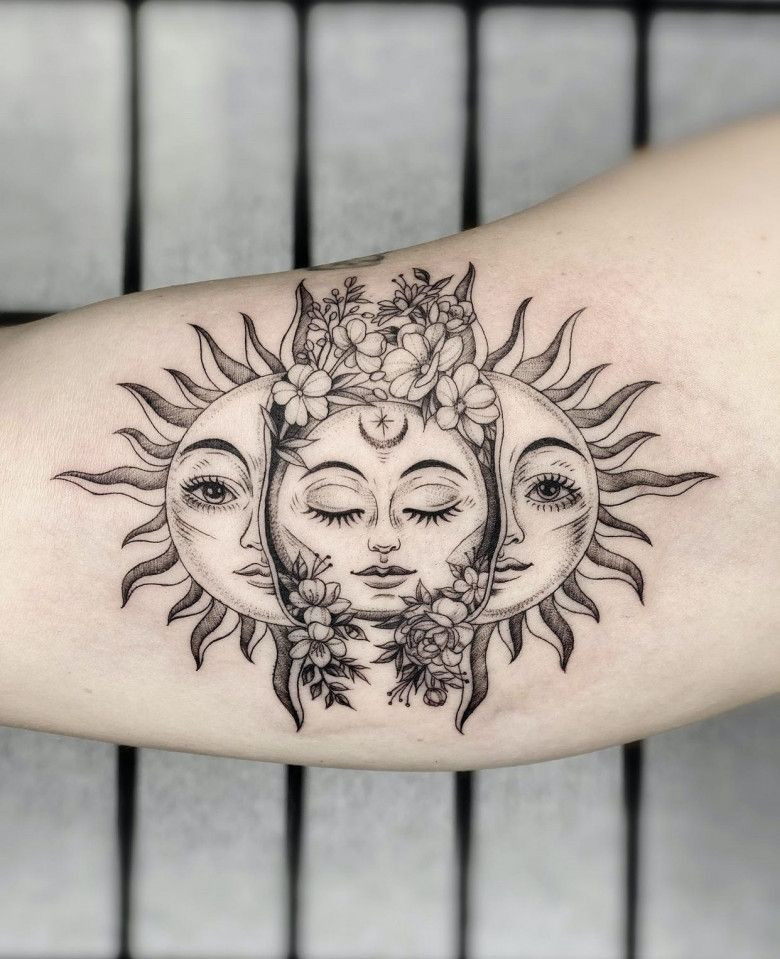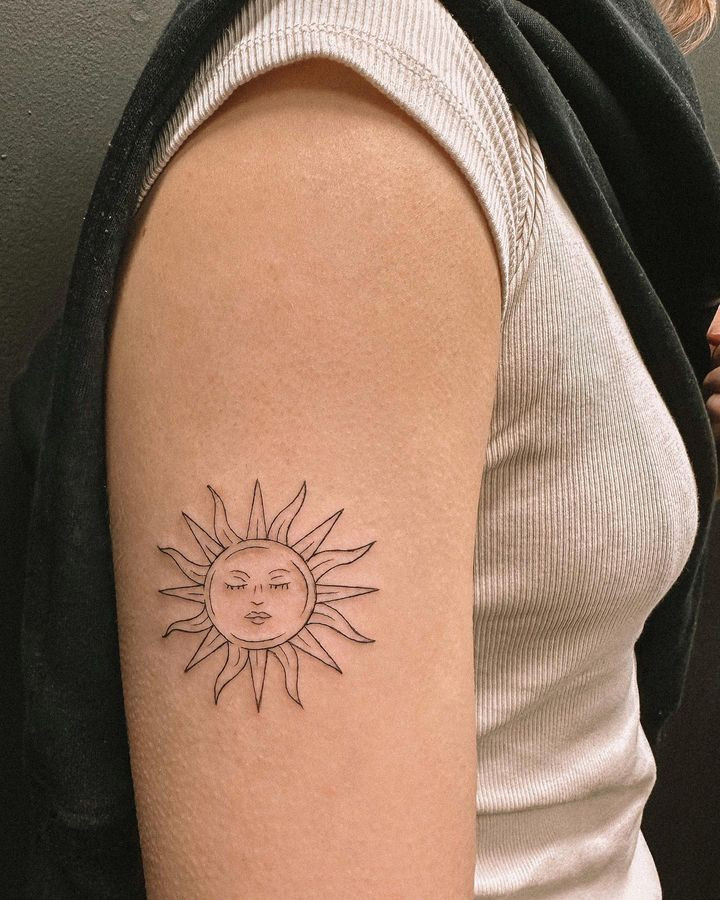Sun Tattoos: Symbolism and Styles

Content:
The Meaning of Sun Tattoos
A tattoo depicting the sun carries a multitude of meanings, with two of the most common being symbols of truth and light. Many people regard the sun as a symbol of light that comes to aid in difficult times. Inspired by this, many individuals choose to etch the sun on their bodies as a powerful symbol of body art. Such a tattoo can also serve as a reminder of the challenges overcome, thanks to the light and radiance of the sun.
Moreover, some people opt for a sun tattoo to express the idea that they themselves radiate light and warmth to those around them. It can symbolize friendship and the ability to brighten the lives of loved ones and friends by shedding light on their dark times. For others, this tattoo can express their religious or spiritual belonging, as the sun is a symbol of the divine or sacred in many cultures.
Sun tattoos are also associated with other meanings, such as power, knowledge, sensuality, regeneration, and new life.

The Sun as an Archetype
The sun, as a symbol, holds a universal significance that transcends many cultures and time periods. It is associated with fundamental life principles such as light, warmth, and vitality. In various cultures, the sun is revered as a deity or spirit symbolizing divine power.
The Sun in Ancient Cultures
In ancient civilizations such as ancient Greece and Rome, the sun was worshipped as a god. In Rome, the sun was associated with the god Sol, while in Greece, it was linked to the god Helios. Tattoos depicting the sun in these cultures symbolized life energy and divine influence over humanity.
The Sun in Native American Culture
For many Native American nations, the sun holds special significance. In some cultures, such as the Navajo and Hopi peoples, the sun is considered a divine symbol and the source of light, warmth, and life. Sun tattoos in these cultures often serve as signs of well-being and a connection to the spiritual world.
The Sun in Egyptian Culture
In ancient Egypt, the sun had particular importance, associated with the god Ra, the sun god. Tattoos featuring the sun in this culture could symbolize protection from evil and the bestowal of life.
The Sun in the Modern World
In contemporary society, a sun tattoo may hold various meanings for different people. It can symbolize new beginnings, hope, light, and positivity. The sun is also associated with warmth and life energy, making it a popular motif for tattoos.
Examples of Sun Tattoo Motifs and Their Meanings
One of the most mystical images is the black sun, originating from Northern Scandinavian culture. It symbolizes the connection between humans and occult sciences, as well as a belief in life after death.
In contrast, the Slavic sun is used as an amulet to protect its owner from diseases and misfortunes. This image has always been particularly valuable to Slavic peoples, who consider the sun a powerful protective charm.

The rising sun, initially stemming from the world of prison tattoos, has gained new significance over time. Its symbolism now signifies the beginning of a new phase in life, renewal, and hope for a better future. This motif is primarily presented in the Japanese style.
The image of the sun and the moon is a common motif for paired tattoos. This symbol encapsulates the god of the sun and the goddess of the moon, making it a popular choice for couples, representing the feminine and masculine principles.

The sun and lion is primarily a motif chosen by men, symbolizing the triumph of human reason and the dominance of light over darkness. Individuals with such tattoos often possess leadership qualities and are capable of making decisions based on knowledge and life experience, as well as relying on their intuition.
The sun with an eye is an image rooted in ancient mythology when many world cultures regarded the sun as the eye of higher powers. It symbolizes a person's faith in higher powers and their aspiration for leadership, as well as an awareness of the potential to guide other people.

Sizes and Placements of Sun Tattoos
A sun tattoo can be small or large. Depending on the complexity of the design, the sun can be inked in a small size on the wrist, neck, finger, elbow, or behind the ear. If you intend to use the tattoo as an amulet, it is advisable to choose a compact size that can be concealed with clothing items.

Larger and more detailed sun tattoos are typically favored by men. The sun can be placed on the forearm, chest, arm, shoulder, shin, or back. It can also be incorporated into ornamental or geometric patterns or compositions executed in ethnic styles such as Celtic or Polynesian motifs. Whether it's a color or black-and-white tattoo, with the sun playing the central role, it can be an excellent choice for a man looking to give their tattoo deep meaning.
Depictions of the sun and the moon as dual tattoos, placed on the left and right arms or shoulders, are also highly popular. It is essential that both of these symbols are executed in a unified style, creating a cohesive composition even when separated by some distance. Ultimately, regardless of size or placement, a sun tattoo will be a unique and symbolic adornment for your body.

Suitable Styles for Sun Tattoos
Some of the popular styles for sun tattoos include minimalism, tribal, blackwork, linework, fineline, and old-school. Styles such as watercolor do not always fit well with a sun tattoo, as they are primarily intended for semi-transparent motifs in soft pastel tones. However, for women, choosing a watercolor technique for a sun tattoo is considered acceptable if the design includes patterns with the moon or flowers.






Comments (0)